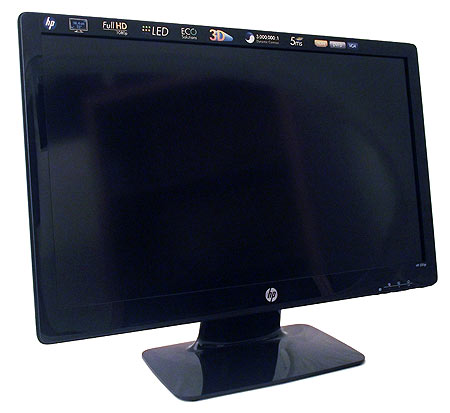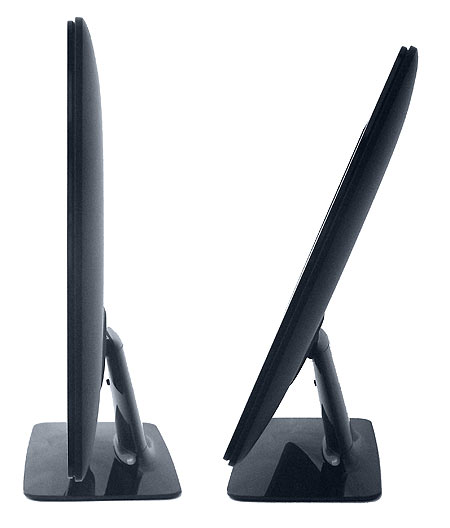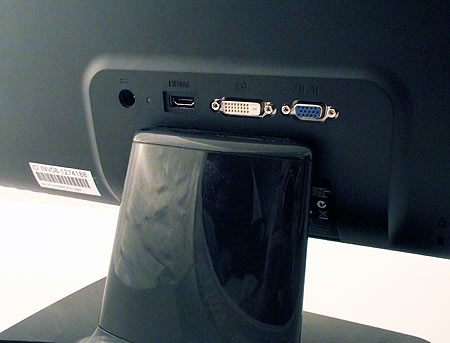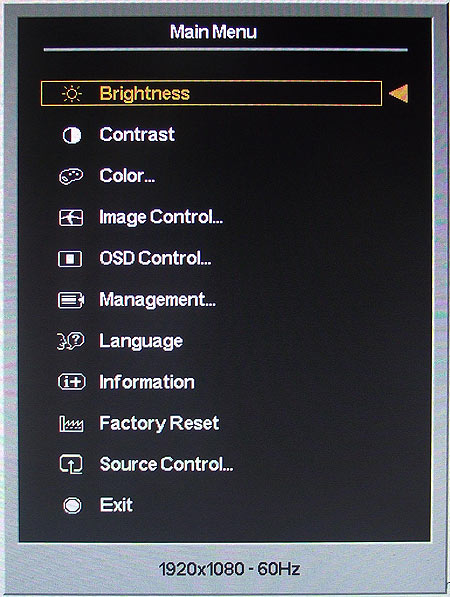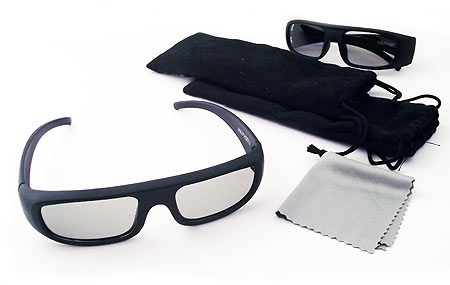HP 2311 gt 23" Monitor Review: Passive, Polarized 3D On A Budget
HP sent us its newest stereoscopic 3D-capable monitor, the 2311 gt. Aimed at budget-conscious customers, we take our first look at a passive, polarized monitor based on FPR technology and put it up against a more expensive, active, shutter-based system.
HP's 2311 gt: Entry-Level Polarized Stereoscopy
We've been talking about stereoscopic 3D for a while now. We have it in our living rooms and on multi-display stands in our lab. In fact, based on the Tom's Hardware offices around the world, you might even guess that this technology is gaining a foothold. But away from our test benches, we can count on one hand the number of friends and family who considered 3D a compelling-enough experience to buy.
Although stereoscopic 3D hasn't caught on the way many vendors hoped it would, we're not entirely surprised. The premium on screens, powerful-enough graphics cards, and active shutter glasses remains significant. And when folks aren't bowled over by what they see, it's hard to charge more for it.
Nevertheless, we make an effort to keep up with the technology. We published the world’s first introduction to Blu-ray 3D on the PC, and more recently dug into a thorough comparison of Nvidia’s 3D Vision and AMD’s HD3D initiatives. There is a topic we haven't weighed in on yet, though: the two most prolific 3D viewer technologies for achieving stereoscopy, active shutter and polarized passive systems.
When Hewlett-Packard let us know that it wanted to send over its new 2311 gt 3D monitor, sprung at the chance to evaluate HP's hardware and compare a passive solution to the 120 Hz active options we've used in the past.
HP 2311 gt 3D Monitor
More than a year ago, we reviewed HP's 2311x in Three-Way 23" LED LCD Roundup: Dell, HP, And Samsung. The budget-oriented 23" TN-based LCD sported a 1920x1080 native resolution, plastic construction, and easy display input accessibility thanks connectors that stuck straight out the back of the monitor.
The 2311 gt is modeled after the 2311x, a fairly strong hint that the 2311 gt targets an entry-level customer interested in stereoscopic 3D. A quick look at its price is all of the confirmation we need: at the time of writing, this screen costs $250 on HP's website after a rebate (its list is $300). That's one of the lowest prices for a 3D-capable screen we've seen.
Get Tom's Hardware's best news and in-depth reviews, straight to your inbox.
For the price, you get the same monitor chassis as HP's 2311x. It's both plastic and light, with a solid base that doesn’t allow for height, swivel, or pivot adjustments. Tilt can be set from 90 to about 65 degrees from the desktop (tilt is a critical adjustment for Film-type Patterned Retarder 3D technology, and this is something we’ll talk about later). Despite its limited available adjustments, the monitor feels sturdy-enough.
As a reviewer, I can appreciate that the 2311 gt's display inputs are easily accessible, presenting HDMI, DVI, and VGA connectors straight out the back. This makes it easier to attach cables without getting up under screen. And while those straight-out-the-back inputs would likely interfere with a wall-mount configuration, this display isn't designed to support such a set-up, so that's a non-issue.
The on-screen display is controlled by four buttons on the bottom-right corner of the LCD. The menu includes basic output adjustments like contrast and brightness, but goes a step further when it comes to color management by facilitating custom red, green, and blue levels set by the viewer. This is a good thing, too; the sample HP submitted had high blue and green levels according to our Spyder 2 Pro calibration equipment, which suggested we set the monitor to 255 R, 195 G, and 160 B.
Bundled with the screen you'll find a power adapter and cord, a six-foot HDMI cable, and a CD loaded up with documentation and software. The disc includes CyberLink’s PowerDVD for Blu-ray 3D playback and 2D-to-3D DVD/video conversion, along with TriDef 3D software for rendering PC games in stereoscopic 3D. That's all you need for playback and gaming in stereo, aside from the actual content. Of course, you get other extras, such as monitor drivers, the HP adjustment pattern utility, and twenty-five demonstrative 3D photos.
Lastly, the box comes with two pairs of passive FPR glasses with protective pouches and a cleaning cloth. It’s important to note that these light, simple, and low-cost polarized glasses represent one of the primary strengths of passive 3D displays. The 2311 gt even works with the RealD 3D glasses you may have been handed at a movie theater and LG's branded FPR 3D glasses.
| HP 2311 gt Specifications | |
|---|---|
| Part Number | QJ684AA |
| Panel Type | TN |
| Viewable Image Area | 20.047" x 11.276" |
| Dimensions (HxWxD) | 21.97"x6.26"x16.4" |
| Weight | 3.7 kg |
| Viewing Angle | Horizontal 170o, Vertical 160o |
| Brightness | 200-250 nits |
| Contrast Ratio | 1000:1 |
| Response Rate | 5 ms |
| Color Gamut | 72% |
| Native Resolution | 1920x1080 @ 60 Hz |
| Pixel Pitch | 0.265 x 0.265 mm |
| Pixels Per Inch (PPI) | 96 |
| 3D | Film-type Patterned Retarder (FPR) |
| Power Consumption | 45 W |
| Warranty | Limited One-Year warranty |
Current page: HP's 2311 gt: Entry-Level Polarized Stereoscopy
Next Page 3D Display Technology: Passive Polarized Vs. Active ShutterDon Woligroski was a former senior hardware editor for Tom's Hardware. He has covered a wide range of PC hardware topics, including CPUs, GPUs, system building, and emerging technologies.
-
army_ant7 I forgot if I read this before, but your GPU would have to pump out twice the number of frames for games. As it obviously seems, this is true for active shutter 3D displays. I assume that even if polarized 3D displays "interlace" 2 half resolution frames for 1 3D frame, the processing needed is still for 2 full resolution frames.Reply
If anyone has better knowledge on this, please correct me. :-) -
f-14 1950's cheap gimmick idea of what 3-D is.Reply
complete false advertising since it's on a 1D screen.
save your money. -
PreferLinux f-141950's cheap gimmick idea of what 3-D is.complete false advertising since it's on a 1D screen.save your money.You mean 2D.Reply -
vdr369 Its not worth the price, and if you compare the quality warranty with AOC 23 inch polarized monitor AOC (which has superior color accuracy and 3 years onsite warranty)knock outs this dummy.Reply
and I liked the acer's 27inch polarized one because it doesn't need a software to convert 2d to 3d. -
army_ant7 f-141950's cheap gimmick idea of what 3-D is.complete false advertising since it's on a 1D screen.save your money.One thing you have to understand that the fact that even 3D models in a game for example get rasterized to a 2D screen. Are they a gimmick then since 3D or 2D graphics, they still end up being 2D anyway? 3D games give us the perception of a 3D world.Reply
If these technologies can make us have the illusion of having a 3D view, like in real life, then I wouldn't say it's a gimmick. Are (better) in-game graphics a gimmick? A game world is also an illusion of something that isn't there, just like how it seems that you're saying 3D isn't there because it's a 2D screen.
BTW, it's 2 different frames from different perspectives shown at the same time, just like how your two eyes work. I assume you have two, if not, I apologize.
If you don't like stereoscopic 3D, then fine, voice out your opinions, but claiming those opinions of yours as facts is just not right. I don't mean to sound angry, but I felt obliged to "voice" this out. I'm open to debate and I don't mean to piss anyone off. -
hyteck9 what about dual 3D monitors? Do any video cards even support the setup? Would it even be playable?Reply -
army_ant7 I think there's a 3 3D monitor setup possible with Nvidia cards. I'm not sure, but if what I've shared in the first ever comment on this thread is true, driving 1 3D monitor is already like driving 2 standard ones. 3 3D's would be like 6 standards.Reply
AMD cards can drive an Eyefinity of 6 (standard) monitors, so maybe 3 3D's doesn't sound to bad.
Again, I'm not sure. Just sharing my observations and deductions on this, and I could be very wrong. :-) -
SnickerSnack Dual 3D monitors would be unplayable - The inside screen edges would split your character in half 99% of the time.Reply
Nvidia supports 3D Surround, which is three identical monitors. I haven't seen it in action, but hear it's fabulous. Pretty sure it requires at least a couple of beefy GPUs running in SLI.
